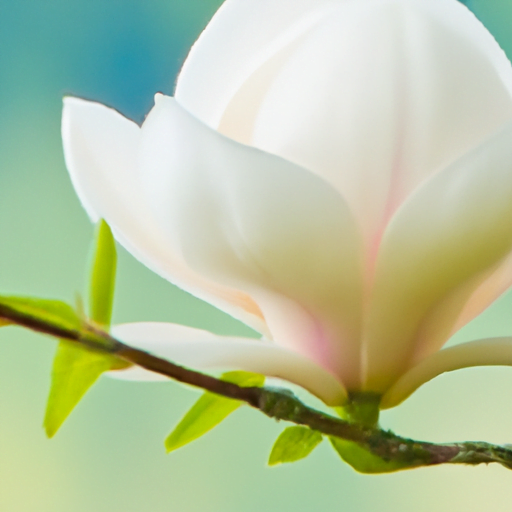Ready to embark on a journey filled with tranquility and natural beauty? Join us as we explore the serene gardens and parks around the world while cruising. From the enchanting Halifax Public Gardens in Nova Scotia to the sprawling expanse of Shelburne Farms in Vermont, these green spaces offer a peaceful escape and a chance to connect with nature. Pack your bags and get ready to immerse yourself in the captivating world of serenity and tranquility that these gardens and parks have to offer.
Table of Contents
ToggleGardens and Parks Around the World
Halifax’s Public Gardens
Overview of Halifax’s Public Gardens
Halifax’s Public Gardens, located in the heart of the city, is a picturesque oasis that offers a peaceful escape from the bustling urban environment. Spanning 16 acres, the gardens are filled with vibrant flowers, well-manicured lawns, and serene paths, making it a popular destination for both locals and tourists.
History and Significance
Established in 1867, Halifax’s Public Gardens hold a significant place in the city’s history and culture. It is one of the oldest surviving Victorian-style public gardens in North America. The gardens were designed by landscape architect Richard Power and have since been meticulously maintained and preserved.
Features of the Garden
Halifax’s Public Gardens boast an array of stunning features that contribute to its beauty and allure. One of the main attractions is the ornate wrought-iron gates, which serve as the entrance and set the tone for the enchanting experience that awaits within. Visitors can explore the diverse collection of floral displays, including vibrant tulips, elegant roses, and fragrant lilacs.
The gardens also house an exquisite Victorian bandstand where live music performances are held during the summer months, adding a touch of charm and nostalgia. For those seeking tranquility, there are several ponds and a gracefully flowing stream that create a serene ambiance amidst the lush greenery.
Maintenance and Management
The Halifax Public Gardens are meticulously maintained by a dedicated team of horticulturists and gardeners. Their commitment to preserving the garden’s beauty is evident in the well-tended flower beds, immaculate lawns, and manicured shrubs. The team works tirelessly throughout the year to ensure that the gardens remain in pristine condition for visitors to enjoy.
The Halifax Public Gardens is managed by a non-profit organization, the Friends of the Public Gardens, whose mission is to protect, promote, and enhance the gardens. Through their efforts, they organize various events and educational programs that aim to educate the community about the importance of green spaces and the preservation of natural beauty.
Shelburne Farms in Vermont
Introduction to Shelburne Farms
Located on the shores of Lake Champlain, Shelburne Farms is a majestic estate that encompasses over 1,400 acres of picturesque farmland, forests, and gardens. It offers visitors a unique opportunity to reconnect with nature, learn about sustainable farming practices, and indulge in the beauty of Vermont’s landscapes.
Historical Background
Shelburne Farms holds a rich historical legacy dating back to the late 19th century. Originally, the estate was the summer retreat of Dr. William Seward Webb, a wealthy industrialist and philanthropist. He and his wife, Lila Vanderbilt Webb, created a model agricultural estate with a focus on sustainable farming practices.
Natural Beauty and Landscapes
One of the highlights of Shelburne Farms is its breathtaking natural beauty and landscapes. The estate features rolling hills, meandering trails, and expansive meadows that are home to a diverse array of flora and fauna. Visitors can enjoy leisurely walks along the shores of Lake Champlain, take in panoramic views of the Adirondack Mountains, and explore the verdant forests.
Educational Programs and Initiatives
Shelburne Farms is renowned for its commitment to education and sustainable agriculture. The farm offers a wide range of educational programs and initiatives that aim to promote environmental awareness, organic farming, and healthy living. Visitors can participate in farm tours, workshops, and hands-on activities that provide insights into sustainable food production and land stewardship.
Butchart Gardens in British Columbia
Overview of Butchart Gardens
Nestled on the southern tip of Vancouver Island, Butchart Gardens is a world-renowned horticultural masterpiece that attracts millions of visitors each year. Created from an abandoned limestone quarry, the garden has been transformed into a botanical paradise, showcasing a harmonious blend of natural beauty and artistic design.
Creation and Expansion
Butchart Gardens has a fascinating history that dates back over a century. It originated as a personal project of Jennie Butchart, who envisioned transforming her husband’s exhausted limestone quarry into a vibrant garden. Over the years, the gardens expanded and flourished under the direction of subsequent generations of the Butchart family.
Theme Gardens and Highlights
One of the defining features of Butchart Gardens is its diverse collection of theme gardens. Each garden is meticulously designed to showcase a specific type of flora or to evoke a particular ambiance. Highlights include the Sunken Garden, a former quarry turned into a breathtaking display of colorful blooms; the Rose Garden, boasting over 250 varieties of roses; and the Japanese Garden, a serene oasis of tranquility.
Events and Attractions
Butchart Gardens offers a year-round calendar of events and attractions to captivate visitors of all ages. During the summer months, visitors can indulge in nighttime illuminations that transform the gardens into a magical wonderland. The garden also hosts live concerts, fireworks displays, and horticultural tours, providing immersive experiences that celebrate the beauty of nature.
Golden Gate Park in San Francisco
Introduction to Golden Gate Park
In the heart of San Francisco lies the sprawling oasis of Golden Gate Park. Spanning over 1,000 acres, the park offers a welcome respite from the urban jungle, providing visitors with a myriad of recreational opportunities and natural wonders to explore.
Size and Location
Golden Gate Park is an expansive green space that stretches over three miles from the Pacific Ocean to the heart of the city. It is larger than New York City’s Central Park and boasts a diverse array of landscapes, including lush meadows, tranquil lakes, and dense forests.
Notable Features and Landmarks
Golden Gate Park is home to several notable features and landmarks that make it a beloved destination for locals and tourists alike. The Japanese Tea Garden, with its meticulously manicured bonsai trees and tranquil koi ponds, transports visitors to another world. The Conservatory of Flowers, a Victorian-era greenhouse, houses a stunning collection of tropical plants and exotic blooms. Additionally, the De Young Museum and the California Academy of Sciences offer cultural and educational experiences within the park.
Recreational Activities
Golden Gate Park offers a plethora of recreational activities to cater to every interest. Visitors can rent a paddleboat and explore the tranquil Stow Lake, enjoy a leisurely bike ride along the park’s many trails, or attend a yoga class amidst the serene backdrop of nature. The park also features numerous playgrounds, tennis courts, and picnic areas, providing ample opportunities for outdoor enjoyment.
Central Park in New York City
Overview of Central Park
Central Park, an iconic green oasis in the heart of New York City, is an urban paradise that offers respite from the bustling streets and skyscrapers. Spanning 843 acres, the park is a testament to the city’s commitment to providing a harmonious blend of nature and recreation for its residents and visitors.
Historical Significance
Central Park holds immense historical significance, both in terms of its creation and its role in shaping the identity of New York City. Designed by landscape architects Frederick Law Olmsted and Calvert Vaux in the mid-19th century, the park was envisioned as a democratic space, accessible to people of all walks of life. It served as a model for urban parks across the world.
Landscapes and Attractions
Central Park offers a diverse range of landscapes and attractions that cater to every season and interest. The park features vast meadows, serene lakes, and dense woodlands, providing a sense of natural tranquility amidst the urban chaos. Visitors can explore iconic landmarks such as Belvedere Castle, Bethesda Terrace, and the Central Park Zoo. The park is also home to several sculptures and statues, including the famous Alice in Wonderland statue.
Year-round Activities
Regardless of the season, Central Park offers a wealth of activities to enjoy throughout the year. In the warmer months, the park comes alive with performances, concerts, and outdoor festivals. Visitors can rent rowboats on the lake, partake in a game of baseball or softball, or simply relax on the lawns and soak up the vibrant atmosphere. During the winter, the park transforms into a snowy wonderland, with opportunities for ice skating, sledding, and admiring the beauty of nature in a different light.
Keukenhof Gardens in the Netherlands
Introduction to Keukenhof Gardens
Keukenhof Gardens is a world-famous horticultural masterpiece that showcases the vibrant beauty of spring in the Netherlands. Situated in the heart of the country’s flower-growing region, Keukenhof is a paradise of colorful tulips, daffodils, and hyacinths, attracting millions of visitors each year.
History and Creation
Keukenhof Gardens has a rich history that dates back to the 15th century when it served as the estate’s kitchen garden for the adjacent castle. In 1949, the garden was transformed into a stunning display of floral beauty to promote the Dutch flower industry. Since then, Keukenhof has become a symbol of the Netherlands’ horticultural prowess.
Tulip Season and Floral Displays
The highlight of Keukenhof Gardens is its world-renowned tulip season, which takes place from late March to mid-May. During this time, the gardens burst into a kaleidoscope of colors, showcasing around seven million flowers. Visitors can stroll through meticulously manicured pathways, surrounded by vibrant tulips in various shapes, sizes, and shades. The garden also features other spring blooms, such as daffodils, hyacinths, and orchids, ensuring a feast for the senses.
Art and Cultural Events
Keukenhof Gardens not only celebrates the beauty of flowers but also embraces art and culture. Throughout the season, the garden hosts various exhibitions and installations that blend seamlessly with the floral displays. Visitors can admire sculptures, paintings, and innovative floral designs that pay homage to the rich artistic heritage of the Netherlands. Musical performances, dance shows, and cultural events further enhance the immersive experience within the gardens.
Versailles Gardens in France
Overview of Versailles Gardens
Nestled within the grandeur of the Château de Versailles, the Versailles Gardens are a masterpiece of French formal garden design. Immaculately manicured, these gardens have captivated visitors for centuries with their symmetrical layouts, stunning fountains, and exquisite groves.
Palace and Garden History
The Versailles Gardens were created in the 17th century under the visionary eye of landscape architect André Le Nôtre. They were commissioned by King Louis XIV to complement the opulence of the Palace of Versailles. The gardens were conceived as an extension of the palace, serving as an outdoor royal court and a living work of art.
French Formal Garden Design
The Versailles Gardens showcase the epitome of French formal garden design, characterized by geometric patterns, meticulous symmetry, and precise alignments. The garden is divided into distinct areas, each with its own unique features, such as the Grand Parterre, Orangery, and Latona Fountain. Visitors can marvel at the immaculately manicured lawns, intricate parterre designs, and meticulously pruned hedges.
Fountains and Groves
One of the highlights of the Versailles Gardens is its magnificent collection of fountains and groves. The garden boasts over 50 fountains, each exquisitely designed and adorned with sculptures, water features, and ornate decorations. The groves, hidden gems within the garden, offer respite from the sun and provide an intimate setting for leisurely walks or peaceful moments of reflection.
Nara Park in Japan
Introduction to Nara Park
Nara Park, located in the ancient capital city of Nara, is a sprawling communal space that holds immense cultural and historical significance in Japan. Spanning over 1,250 acres, the park is home to numerous temples, shrines, and, most famously, a population of free-roaming deer.
Significance to Japanese Culture
Nara Park holds a special place in Japanese culture as an embodiment of the country’s historical and religious heritage. It was established in 1880 and is home to several UNESCO World Heritage Sites, including the Todai-ji Temple and the Kasuga Shrine. The park serves as a sanctuary that connects visitors with Japan’s rich past and showcases the enduring importance of nature in Japanese society.
Deer Population and Interaction
One of the unique aspects of Nara Park is its population of approximately 1,200 freely roaming deer. These deer, considered sacred messengers of the gods in Shinto mythology, have become a symbol of the park and are protected as a national treasure. Visitors can feed the deer special biscuits available for purchase and enjoy the rare opportunity to interact with these gentle creatures.
Temples and Shrines Within the Park
Nara Park is replete with temples and shrines, each with its own distinct architectural style and historical significance. The Todai-ji Temple, housing the iconic Great Buddha statue, is a must-visit for its sheer size and spiritual grandeur. The Kasuga Shrine, known for its iconic stone lanterns, exudes an air of ancient mystique. Strolling through the park, visitors can explore the tranquil beauty of temples and shrines that have stood for centuries.
Kirstenbosch National Botanical Garden in South Africa
Overview of Kirstenbosch Garden
Nestled against the eastern slopes of Table Mountain, the Kirstenbosch National Botanical Garden is a botanical paradise that showcases the rich biodiversity and indigenous plants of South Africa. With its dramatic landscapes and breathtaking views, the garden offers visitors a unique opportunity to explore the natural wonders of the Cape Floral Kingdom.
Biodiversity and Indigenous Plants
Kirstenbosch Garden is renowned for its incredible biodiversity, which is evident in its collection of indigenous plants. The garden boasts over 7,000 species of indigenous plants, many of which are found nowhere else in the world. Visitors can wander through various themed gardens, such as the Fragrance Garden, the Water-wise Garden, and the Fynbos Walk, each highlighting different aspects of South Africa’s rich flora.
Canopy Walkway and Treetop Views
One of the standout features of Kirstenbosch Garden is its Canopy Walkway, a suspended walkway that allows visitors to explore the garden from a unique vantage point. As you stroll along the walkway, you’ll be treated to breathtaking views of the surrounding landscapes, including the majestic Table Mountain and the Kirstenbosch forest canopy. It’s the perfect spot to immerse yourself in the wonders of nature and experience a sense of tranquility.
Summer Concerts and Events
Kirstenbosch Garden is not only a botanical marvel but also a cultural hub that celebrates the arts. During the summer months, the garden hosts a series of outdoor concerts, known as the Kirstenbosch Summer Sunset Concerts. Visitors can enjoy live performances by local and international artists while basking in the beauty of the garden. It’s a truly magical experience, combining the pleasures of music and nature in one setting.
Singapore Botanic Gardens
Introduction to Singapore Botanic Gardens
The Singapore Botanic Gardens is a tropical oasis in the heart of the bustling city-state. Spanning over 180 acres, the gardens are a testament to Singapore’s commitment to green spaces and environmental conservation. With their diverse collection of plants, tranquil landscapes, and educational initiatives, they offer a haven for nature lovers and a place of respite for urban dwellers.
World Heritage Site Recognition
In 2015, the Singapore Botanic Gardens were designated as a UNESCO World Heritage Site, making them the first and only tropical botanic garden on the list. This prestigious recognition underscores the gardens’ historical and cultural significance, as well as their commitment to biodiversity conservation and the integration of nature into the cityscape.
Orchid Collection and National Orchid Garden
The Singapore Botanic Gardens are renowned for their extensive collection of orchids, a flower synonymous with the region’s tropical beauty. Within the gardens, visitors can explore the National Orchid Garden, which showcases over 1,000 species and 2,000 hybrids of orchids. This vibrant display pays tribute to Singapore’s rich floral heritage and serves as a hub for orchid enthusiasts and researchers from around the world.
Rainforest and Healing Gardens
The Singapore Botanic Gardens offer a diverse range of landscapes that reflect the ecological diversity of the region. Visitors can immerse themselves in the lush beauty of the Rainforest Garden, a verdant oasis that mimics the natural habitats found in Southeast Asia. For those seeking tranquility and reflection, the Healing Garden offers a serene setting featuring aromatic plants and medicinal herbs, promoting wellness and mindfulness.
In conclusion, the serene gardens and parks highlighted in this article offer visitors a unique opportunity to reconnect with nature, immerse themselves in beauty, and experience the serenity found within these green spaces. From the Victorian charm of Halifax’s Public Gardens to the exotic allure of Singapore Botanic Gardens, these destinations showcase the power of gardens to inspire, educate, and provide a peaceful escape from the demands of everyday life. Whether you’re strolling through the colorful tulip displays of Keukenhof Gardens or exploring the historical significance of Versailles Gardens, these serene oases around the world offer a universal message of the importance of preserving and cherishing our natural surroundings. So, next time you find yourself craving a dose of tranquility, venture into one of these enchanting gardens and let nature work its magic.





